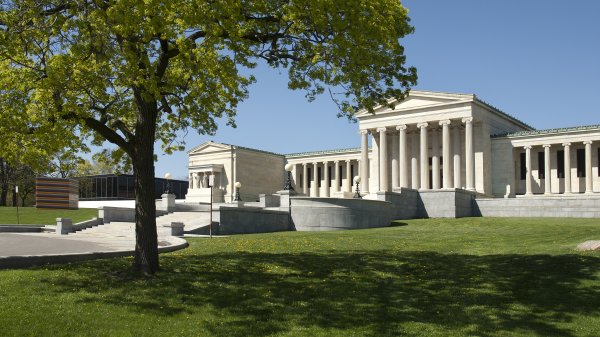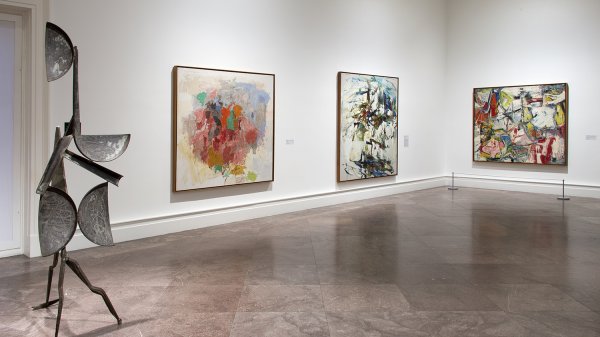Our Buildings
At their first meeting in 1862, the founders of the Buffalo Fine Arts Academy agreed that “Buffalo is to have a permanent Art Gallery at once.” However, the organization operated in several temporary locations until the turn of the 20th century, when John J. Albright donated funds to build its first permanent home. The museum's Greek revival building was designed by Edward B. Green of Green & Wicks and situated next to Frederic Law Olmsted’s Delaware Park. It was intended to serve as the Fine Arts Pavilion of the Pan-American Exposition in 1901, but construction was delayed. It was dedicated on May 31, 1905, and named the Albright Art Gallery.
More than a half century later, the museum was significantly enhanced through the addition of a new wing designed by Gordon Bunshaft of Skidmore, Owings and Merrill of New York. Made possible with major donations from Seymour H. Knox, Jr., and his family, and hundreds of other donors, the new addition opened in January 1962, and the museum was renamed the Albright-Knox Art Gallery.
Clifton Hall, the third building on the museum’s campus, was constructed in 1920 as the Buffalo Society of Natural Sciences. Although designed by Edward B. Green, the architect’s full design was never realized at this location, but became the Buffalo Museum of Science on Humboldt Parkway. In 1929, the building became the home of the Albright Art School; two wings were added in 1938 and 1945. Ownership of Clifton Hall was transferred to the State University College at Buffalo in 1959, and back to the Albright-Knox in 1988. Today, Clifton Hall houses staff offices.
The museum has not added prime exhibition space since Bunshaft’s addition opened in 1962. Since that time, its collection has grown substantially, with the acquisition of more than 5,000 artworks, while its campus has remained largely unchanged. In 2001, the museum began exploring possibilities for growth. Studies have addressed the chronic space shortage that constrains programming and limits access to and visibility of its world-renowned collection. In 2012–13, the architectural firm Snøhetta produced a Master Plan for Growth that proposed several approaches to expansion. In 2016, the museum selected the architectural firm OMA to expand and refurbish its historic campus. Currently, the Knox and Wilmers Buildings are now open, and the Jeffrey E. Gundlach Building will open later this summer.

